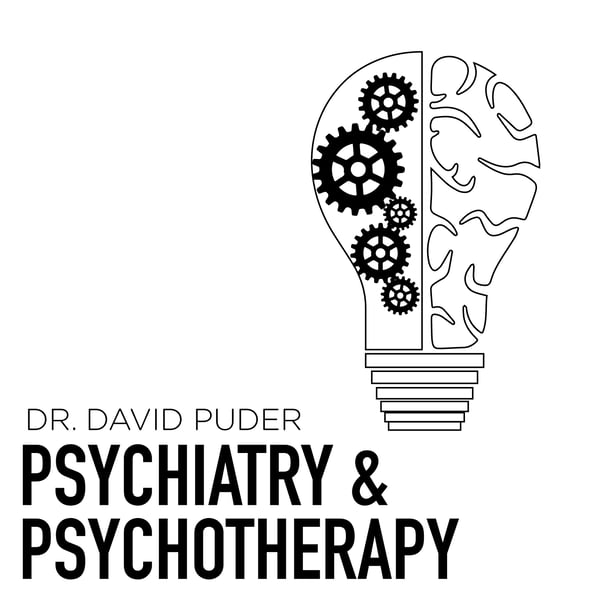Schizophrenia Differential Diagnosis & DSM5
Psychiatry & Psychotherapy Podcast
David J Puder
4.8 • 1.3K Ratings
🗓️ 6 June 2019
⏱️ 33 minutes
🧾️ Download transcript
Summary
Schizophrenia is a diagnosis of exclusion. Doctors and therapists need to be able to rule everything else out before they can land on schizophrenia as an official diagnosis. There are specific symptoms are known as “first-rank symptoms,” which we will cover later in the article, that will help with diagnosing patients (Schneider, 1959). Eighty-five percent of people with schizophrenia endorse these symptoms, but be wary of jumping to conclusions because they are not specific to schizophrenia and, in some studies, are also endorsed by bipolar manic patients (Andreasen, 1991).
DSM5 (Diagnostic and Statistical Manual of Mental Disorders 5th ed.)
Schizophrenia is a clinical diagnosis made through observation of the patient and the patient’s history.
There must be 2 or more of the characteristic symptoms below (Criterion A) with at least one symptom being items 1, 2 or 3. These symptoms must be present for a significant portion of time during a 1 month period (or less, if successfully treated).
The patient must have continuous, persistent signs of disturbance for at least 6 months, which includes the 1 month period of symptoms (or less, if successfully treated) and may include prodromal or residual periods.
For a significant portion of the time since the onset of the disturbance, one or more major areas of functioning such as work, interpersonal relations, or self-care are markedly below the level achieved prior to the onset.
If the onset is in childhood or adolescence, there is failure to achieve expected level of interpersonal, academic, or occupational achievement.
Criterion A:
A. Positive symptoms (presence of abnormal behavior)
1. Delusions
2. Hallucinations
3. Disorganized speech (eg, frequent derailment or incoherence)
4. Grossly disorganized or catatonic behavior
B. Negative symptoms (absence or disruption of normal behavior)
5. Negative symptoms include affective flattening, alogia, avolition, anhedonia, asociality.
Link to full episode: notes
Resource Library: here
Link to sign up for CME go: here
Member Login to do CME activity go: here
Instagram:dr.davidpuder
Twitter:@DavidPuder
Facebook: DrDavidPuder
Transcript
Click on a timestamp to play from that location
| 0:00.0 | Hello and welcome to the Psychiatry and Psychotherapy podcast, with over 32,000 mental |
| 0:14.2 | professionals listening every episode. |
| 0:17.2 | Why? |
| 0:18.2 | Because we need to stick together to survive a mental health field. |
| 0:20.8 | I'm here to talk about getting rid of burnout, increasing jobs satisfaction, and feeling |
| 0:25.5 | like an expert in what you do. |
| 0:29.7 | All right, so this is the subsequent episode, episode three of our schizophrenia series. |
| 0:39.1 | And I'm here with Dr. Arianna Cunningham. |
| 0:42.1 | Hello. |
| 0:43.1 | And today we're going to go through the DSM-5 diagnostic criteria for schizophrenia. |
| 0:50.6 | And we're going to hit the differential diagnosis for schizophrenia, like other things that |
| 0:54.3 | cause psychotic symptoms. |
| 0:56.6 | And we'll see if we have time to get into medications. |
| 0:59.0 | Awesome. |
| 1:00.0 | Yeah, let's get started. |
| 1:01.0 | Okay. |
| 1:02.0 | Let's get started. |
| 1:03.0 | So I think to kind of open things up first off, it's important to note that schizophrenia |
| 1:07.5 | in itself as a diagnosis is a diagnosis of exclusion. |
| 1:11.3 | There's nothing directly pathonomonic for this. |
| 1:14.5 | It's something that we really need to rule everything out that on the differential diagnosis |
| 1:18.9 | list before we can firmly say this is schizophrenia. |
... |
Please login to see the full transcript.
Disclaimer: The podcast and artwork embedded on this page are from David J Puder, and are the property of its owner and not affiliated with or endorsed by Tapesearch.
Generated transcripts are the property of David J Puder and are distributed freely under the Fair Use doctrine. Transcripts generated by Tapesearch are not guaranteed to be accurate.
Copyright © Tapesearch 2025.

